Techniques for the discovery and evaluation of drugs against alopecia
February 2011
in “Expert Opinion on Drug Discovery”
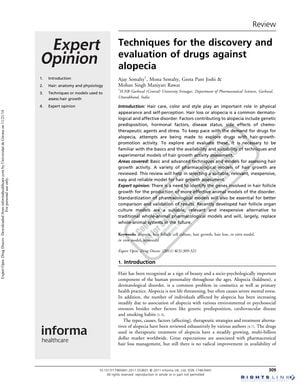
TLDR We need better treatments for hair loss, and while test-tube methods are helpful, they can't fully replace animal tests for evaluating new hair growth treatments.
The 2011 document reviews the challenges and techniques in drug discovery and evaluation for alopecia, emphasizing the need for more effective treatments due to the psychological impact of hair loss. It discusses the anatomy of hair, the hair growth cycle, and the criteria for an effective alopecia drug. Various in vivo and in vitro models are described for assessing hair growth, including mouse and macaque models, with the macaque monkey being the second most relevant model after humans. The document details methods for evaluating hair growth in studies, such as hair length measurement and histological analysis, and cites specific studies on the effects of treatments like plant extracts. It also discusses the limitations of current techniques and the potential of in vitro systems and genetically modified animal models to replace whole-animal systems in research. The document concludes that while in vitro systems are useful, they cannot yet fully replace animal assays for initial assessments of hair growth treatments.
View this study on tandfonline.com →
Cited in this study
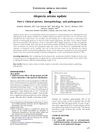
research Alopecia areata update
Half of people with Alopecia Areata may see hair regrowth within a year without treatment, but recovery is unpredictable.
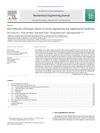
research Hair follicular cell/organ culture in tissue engineering and regenerative medicine
Stem cell therapy is a promising approach for hair regrowth despite potential side effects.
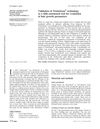
research Validation of TrichoScan® technology as a fully-automated tool for evaluation of hair growth parameters
TrichoScan® is a reliable tool for measuring hair growth, providing quicker and more consistent results than manual methods.
research The C3H/HeJ mouse and DEBR rat models for alopecia areata: review of preclinical drug screening approaches and results
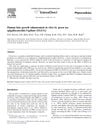
research Human hair growth enhancement in vitro by green tea epigallocatechin-3-gallate (EGCG)
Green tea component EGCG could potentially promote human hair growth.
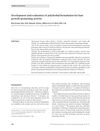
research Development and evaluation of polyherbal formulation for hair growth–promoting activity
The herbal formulation promoted hair growth faster and more effectively than minoxidil in rats.
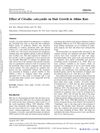
research Effect ofCitrullus colocynthis. on Hair Growth in Albino Rats
Citrullus colocynthis extract is effective for hair growth, comparable to minoxidil.
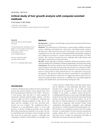
research Critical study of hair growth analysis with computer-assisted methods
The Trichoscan system was found to be inaccurate for measuring hair growth, needing better software to be useful.
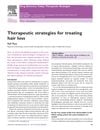
research Therapeutic strategies for treating hair loss
The conclusion is that we need more effective hair loss treatments than the current ones, and these could include new drugs, gene and stem cell therapy, hormones, and scalp cooling, but they all need thorough safety testing.
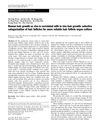
research Human hair growth ex vivo is correlated with in vivo hair growth: selective categorization of hair follicles for more reliable hair follicle organ culture
Choosing hair follicles at the same growth stage leads to more consistent hair growth experiments.
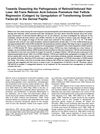
research Towards Dissecting the Pathogenesis of Retinoid-Induced Hair Loss: All-Trans Retinoic Acid Induces Premature Hair Follicle Regression (Catagen) by Upregulation of Transforming Growth Factor-β2 in the Dermal Papilla
All-trans retinoic acid causes hair loss by increasing TGF-β2 in hair follicle cells.
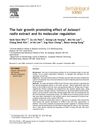
research The hair growth promoting effect of extract and its molecular regulation
Asiasari radix extract promotes hair growth and increases protein synthesis and cell proliferation.

research Evaluation and treatment of male and female pattern hair loss
Early diagnosis and treatment, using finasteride, minoxidil, or hair transplantation, improves hair loss outcomes.

research Limitations of human occipital scalp hair follicle organ culture for studying the effects of minoxidil as a hair growth enhancer
Scalp hair follicle culture has limits for testing minoxidil's hair growth effects.
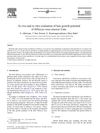
research In vivo and in vitro evaluation of hair growth potential of Hibiscus rosa-sinensis Linn.
Hibiscus rosa-sinensis leaf extract helps hair grow longer and faster.
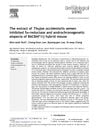
research The extract of Thujae occidentalis semen inhibited 5α-reductase and androchronogenetic alopecia of B6CBAF1/j hybrid mouse
Thujae occidentalis semen extract may help treat male pattern baldness by blocking a hair loss-related enzyme and reducing hair loss in mice.
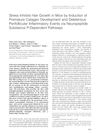
research Stress Inhibits Hair Growth in Mice by Induction of Premature Catagen Development and Deleterious Perifollicular Inflammatory Events via Neuropeptide Substance P-Dependent Pathways
Stress stops hair growth in mice by causing early hair growth phase end and harmful inflammation through a specific nerve-related pathway.
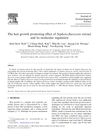
research The hair growth promoting effect of Sophora flavescens extract and its molecular regulation
Sophora flavescens extract may help hair grow by affecting growth factors and blocking a hair-related enzyme.
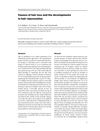
research Causes of hair loss and the developments in hair rejuvenation
Some hair loss can be treated, especially in women due to nutrition, but some types remain untreatable.

research Effect of Latanoprost on Hair Growth in the Bald Scalp of the Stump-tailed Macacque: A Pilot Study
Latanoprost, a glaucoma drug, showed potential for promoting hair growth in bald monkeys, especially at higher doses.
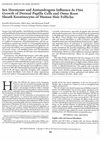
research Sex Hormones and Antiandrogens Influence In Vitro Growth of Dermal Papilla Cells and Outer Root Sheath Keratinocytes of Human Hair Follicles.
Certain sex hormones and antiandrogens can either slow down or speed up the growth of human hair follicle cells depending on their concentration.
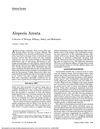
research Alopecia Areata
Different treatments for alopecia areata have varying success rates and side effects; intralesional steroids are most effective.
research Scalp immersion proxigraphy (SIP): an improved imaging technique for phototrichogram analysis*

research Quantitative Models for the Study of Hair Growth in Vivoa
The conclusion is that small hair follicles cause baldness in macaques, and treatments like antiandrogens and minoxidil can prevent hair loss and promote regrowth.
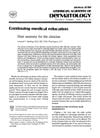
research Hair anatomy for the clinician
Understanding hair follicle anatomy helps diagnose hair disorders.
Related
research Scalp Threading – New Treatment Option for Androgenetic Alopecia
research EVALUATION OF THE EFFECT OF TOPICALLY APPLIED METHYLSULFONYLMETHANE AND THEIR COMBINATION WITH MINOXIDIL SOLUTION FOR IMPROVEMENT OF HAIR GROWTH IN MALE MICE
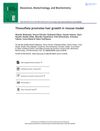
research Thiosulfate promotes hair growth in mouse model
Thiosulfate may help hair grow faster in mice and works well with a common hair growth treatment.
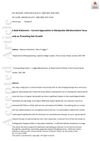
research A bald statement - Current approaches to manipulate miniaturisation focus only on promoting hair growth
The conclusion is that future hair loss treatments should target the root causes of hair thinning, not just promote hair growth.
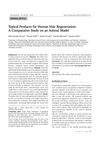
research Topical Products for Human Hair Regeneration: A Comparative Study on an Animal Model
Minoxidil was the most effective treatment for hair regrowth in rats compared to Aminexil or Kerium.

research Progenic hair regrowth treatment- The use of platelet-released growth factors for treating androgenetic alopecia (AGA) by activating hair follicle stem cells
Platelet-released growth factors can treat hair loss by activating hair follicle stem cells, blocking certain pathways, and controlling inflammation and fibrosis.
research Androgenetic alopecia and its remedies – a review
research Effect of crude extracts from Thai herbs on growth of cultured human hair follicle: A pilot study
research A study on effects of water-soluble minoxidil on hair growth in C57BL/6 mice
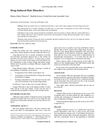
research Drug-Induced Hair Disorders
Some drugs can cause hair loss, excessive growth, or color changes, often reversible but sometimes permanent.